There’s been a spirited discussion here about why all-of-sudden turbocharged four cylinder engines have become so common – even in transportation appliances such as crossovers and family sedans that didn’t used to offer them and often came standard with sixes.
In the past, turbochargers were as a general rule found under the hoods of high-performance cars, a fine example being the Porsche 911 Turbo. The 911 was already very powerful and very quick. But adding a turbo boosted the engine’s power and made it even quicker. You paid extra for the increased power, of course. But those who did were happy to pay extra for it.
They wanted more power – and higher performance.
Turbos were, in other words, formerly used to increase the power of a performance engine. They were exotic things – and touted as such. Put another way, as recently as 20 years ago, it was uncommon to find turbocharged engines in other than performance cars. So why are turbocharged engines all of a sudden so commonly found in everything else?
It is because they increase the power of the downsized engines found in everything else.
The manufacturers – the car companies – have had to winnow down the size (displacement) of the mass market six and even eight cylinder engines they used to commonly offer in family sedans, crossovers and pickups because these engines have become much harder to offer due to compliance pressures, specifically CAFE and “emissions” regulations. So they replace a V6 with a much smaller four. The problem is the four is, by itself, inadequately powerful to propel the vehicle – which is why the vehicle used to come standard with a six. The fix is to turbocharge the four so that it makes power (under boost) comparable to the power of a six but while achieving higher (on paper) gas mileage and lower “emissions” when not under boost.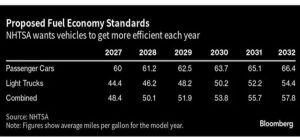
Mass-market turbocharged small-displacement engines can best be understood as an engineering solution to a political problem.
While the power-per-liter achieved by turbocharging these little engines is impressive it is also unnecessary – except as a compliance expedient. Were it not for the need to eke out another couple of miles-per-gallon to comply with the latest, ever-upticking Corporate Average Fuel Economy (CAFE) requirements and the need to winnow down by another fraction of a percent the “emissions” coming out of the exhaust pipe, turbocharged engines would almost certainly be what they were before all of this compliance pressure was brought to bear.
That is to say, they’d be found mostly if not almost entirely under the hoods of high-performance cars, as power-enhancers rather than a coping mechanism for what would otherwise be under-powered engines under the hoods of today’s transportation appliances.
But what about that fuel efficiency benefit?
It is absolutely true that a 2.0 liter turbocharged four will typically deliver higher gas mileage than a 3.0 liter six, assuming you drive the turbo four with a light foot. Catch meet 22.
One of the deceitful things about this game is that while a smaller-displacement engine does have a hypothetical advantage, in terms of how much (or rather, how much less) fuel it burns vs. a larger engine, the actual, real-world advantage is often not much to write home about. Because in order for the smaller engine to make roughly-equivalent power – the reason for the turbo, remember – it must be under boost, which amounts to the same thing as having that larger engine under the hood.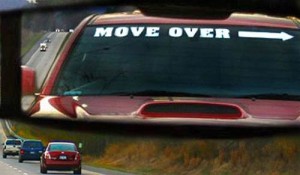
The turbo increases the airflow of the engine, effectively (if temporarily) increasing its displacement. You can limit this increase (and consumption) by keeping your foot light on the pedal. But then you haven’t got the power. More finely, all you have is the power of that smaller engine – which isn’t much when it’s not under boost.
These small four cylinder engines that have been boosted to make up for their otherwise too-small size for the vehicles they are tasked with moving thus offer offer little, if any, real-world benefit to the vehicle’s owner. The advertised mileage increase being very much dependent upon not making much use of the turbo’s boost – which is very difficult to do without driving at a paralytically slow pace. And even if you did so, the mileage gain is largely erased by the cost of the turbocharged engine, which has more parts than a larger displacement engine. The turbo engine also has more potential failure points on account of having more parts . And – of course – it is under pressure. The boost applies force to internal parts and also generates more heat. These factors can be compensated for/ameliorated by such things as heavier-duty internals and a heavy-duty cooling system.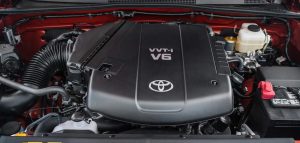
But why not just skip all of that and have a six – sans the turbo – instead?
Because of this need to find engineering solutions to political problems.
Which – when you think about it – is a really big problem.
. . .
If you like what you’ve found here please consider supporting EPautos.
We depend on you to keep the wheels turning!
Our donate button is here.
If you prefer not to use PayPal, our mailing address is:
EPautos
721 Hummingbird Lane SE
Copper Hill, VA 24079
PS: Get an EPautos magnet or sticker or coaster in return for a $20 or more one-time donation or a $10 or more monthly recurring donation. (Please be sure to tell us you want a magnet or sticker or coaster – and also, provide an address, so we know where to mail the thing!)
If you like items like the Baaaaaa! baseball cap pictured below, you can find that and more at the EPautos store!






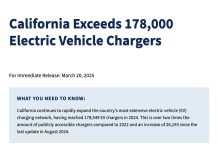

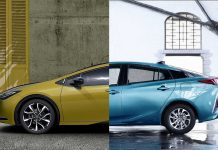




As the owner of a compliant turbo four and a toy turbo six I’ll chime in. The compliant one is a Benz Metris service van with 15ok miles and no issues. Serviced by me as I don’t have time for the dealer. Had there been a choice a six would have been mine.
As stated earlier by others, there is no milage savings to be had by a turbo 2.0 over a 6. To accelerate into traffic moves you out of the .gov mileage drive cycle test.
Now the toy turbo car is a 40 year BMW 6 series with an after market Dinan kit. 175k miles on the clock and some questionable history. The engine hasn’t been opened in my 20 years, though I need to do the head. It gets big V8 fuel milage because I can not keep my foot out of it.
All that said, Here’s hoping change is coming after January. Not the dementia puppet bullshit we have been saddled with.
This topic had me doing my research.
Until my garage building is installed (the steel building company is taking their sweet time), I’m not going to do any heavy mechanic’s work. But when it is finally erected, I will get to finally diagnose and repair my Chevy truck, in which there is a classic 350 in need of repair. It overheated and now is leaking coolant into the oil.
Perhaps that won’t turn out to be a catastrophic failure, but if it does, I’m considering either a rebuild or a new crate engine.
Regarding turbos, I found this:
https://www.hotrod.com/how-to/ccrp-1009-cheap-turbos-from-ebay-on-a-350-small-block-engine/
And this:
https://www.cxracing.com/TRB-KIT-SBC-250-V-TT-T04E
Anyone have any experience with this? 600-700 HP might make for a exhilarating ride.
I know it may take more maintenance and the longevity might be reduced, but I’m not getting any younger and wouldn’t mind my own hot-rod of sorts.
Hi BaDnOn,
Those cast iron small block Chevys are generally pretty tough – so odds are it’s just a bad head gasket, a cheap fix if you can do the labor yourself. I am itching to do some wrenching but it seems lately all I do is type and clean up after the animals!
I know exactly how you feel, Eric. :/
Hi, BaDnOn Who knows?
Who knows?
I concur with Eric.
Most likely you have blown one or both head gaskets.
Caveat; If the engine has overheated, it is possible the heads have warped.
You may need to have the heads decked (machined flat).
But, with the heads off, you can inspect the valves and valve seats.
Likely a machine shop “in town” can provide you with a set of rebuilt heads, if required.
Maybe even in Flagstaff.
RE: supercharging/turbocharging
One last parting shot, and then I will shut up on this topic (I think).
The *fundamental* thing to remember about supercharged/turbocharged engines is that they are high compression engines. There is a very simple formula which relates compression ratio to thermal (a.k.a. thermodynamic) efficiency of an engine. The thermal (thermodynamic) efficiency of an engine is the fraction of heat which gets converted to useful work. According to the Second Law of Thermodynamics, this number must always be less than one. But, the closer you can get to one, the better off you are.
So, how do we get closer to one?
You could design an engine with a really long stroke, which would compress the charge, but having a seriously “undersquare” engine would be undesirable for kinetic reasons.
So, what do we do?
The solution is to fit an external air pump to simultaneously charge the cylinder during the compression stroke. The only question is how to drive the external air pump.
With a “supercharger,” the blower (air pump) is belt driven from the engine output shaft. This takes power from the engine output (sometimes called a “parasitic load”), but remains the favored method for such applications as top fuel dragsters.
With a “turbocharger,” on the other hand , the air pump is driven by the waste heat of the engine itself. In other words, the waste heat of the primary heat engine is recaptured and is used to drive a secondary heat engine which (partially) charges the primary heat engine.
Genius, right? Except there are various engineering difficulties, among which is the infamous “turbo lag,” which is probably why dragsters do not use this technology.
So, if the various engineering challenges can be met (is there any doubt?) this thing should *HONK*, ITLR.
So, if you want to turbocharge your Chevy mouse motor, is this a good idea?
Short answer: I wouldn’t recommend it, especially for a daily diver, unless you have deep pockets.
IMO, mo’ bettah you get yourself a hot rod project, and goose the hell out of it, however you see fit. JMO.
Thanks Adi,
You and Eric could very well be right about a simple blown head gasket or the like. Hopefully I will find out soon.
That truck wouldn’t be a daily driver, but would still be used for towing. I just thought it might be a fun and rewarding project, but maybe a different direction would be more reasonable.
A quick 4 cylinder Turbo…..
The 1.8 20vt 4 cyl is part of the engine family that started out as a Mercedes engine and has evolved into today’s 2.0 lt. turbos in VW/Audi in 2022….It is the best 4 cyl. ever built….
Here is an example of an engine from that family, the only thing quicker 0 to 200 kph is an F1 car….
DSG VW Golf Mk2 4 motion (AWD) 1233HP powered by a VW 2 liter 4 cyl turbo engine
0 to 100 kph = 1.66 sec
100 to 200 kph = 2.74 sec.
0 to 200 kph = 4.4 sec.
1/4 mile 8.26 sec. 170 mph
Porsche 919 Hybrid EVO (Mk II) 1870 lb 1300 HP 8.3 sec. 1/4 mile
The Porsche 919 Hybrid EVO (Mk II) is the quickest car in the world on some tracks.
The 4 motor $2.4 million Rimac EV 1/4 mile 8.58 sec. The quickest EV in the world, quicker then the tesla plaid.
The drive train in this will be in the new Bugatti, VW AUDI Group bought Rimac.
The only car quicker 0 to 200 kph is a $200 million dollar F1 car 0 to 200 kph = 4.1 sec.
0 to 200 km in seconds
Porsche GT2 RS 8.3
Caterham 620r 313 hp 10.1
Donkervoort gto Audi 5cyl 370 hp 7.8
(Super 7 clone)
HKT Super 7 Audi 1.8 20vt 400 hp 7.5
(Super 7 clone)
Tesla plaid 6.3
Bugatti Chiron 6.3
Mclaren Senna 6.8
c8 Corvette 12
F40 Ferrari 10.4
Porsche 919 hybrid EVO 4.5
(quickest car in the world other then F1, on some tracks quicker then F1).
VW ID R electric race car 5.0
(was the quickest car in the world at Pike’s peak and Goodwood hill climb)
F1 4.1
F2 6.6
F3 7.8
https://www.youtube.com/watch?v=R7t4C_0BZT4
TOP 15 MONSTERS … Norway´s Roughest HillClimb 2024 (NEW RECORD!!)
2600 lb 800 HP BMW 6 cylinder turbo powered 1963 Volvo PV544 @ 1:39 in video
2800 lb 2 liter 4 cylinder 600 HP FORD Fiesta Mk8 WRX beats Tesla Plaid in drag race….Tesla can’t even beat a little 4 cylinder… @ 18:52 in video
@ 12:26 in video BMW M3 E30 2JZ-GTE 2800 lb 1306 HP
https://www.youtube.com/watch?v=d6Xq-hODLg0
The Tesla Plaid has 3 motors…1020 HP….it gets beaten by a Ford Fiesta with only one tiny little 2 liter 4 cylinder turbo…EV’s are a joke…
Eric, good points about the 2L turbo.
In addition, if the 2L is direct injection, additional troubles await in the form of carbon deposits on the intake valves.
The excessive carbon buildup will eventually cause cylinder misfires, activating the dreaded MIL.
The only solution is to pull the intake manifold and then remove the carbon by walnut blasting, etc…
TURBOS…I bought a new 2003 ford 6.0 diesel. The turbo had to be replaced twice, once in warranty and once on my dime. As I recall it was about $2,000 out of my pocket. The truck was a pig without the turbo, would hardly move. I just talked to my nephew who has a new bronco, and he had to have the turbo replaced on warranty already, its about a year old. I still say, there is no replacement for displacement.
Really? My Bronco’s 3 and she’s solid with all the mods and a tune
He got the 4 or 6? The 6’s were problematic, just like the infamous 6.0 diesels
One potential end run around the situation has been cut-off from us in the form of FMVSS.
Building your own rod, selling kits doesn’t work because FMVSS say’s you need a federally approved type of frame, and 17 air bags. No $14K new Toyota pickups either. Not on her government’s roads.
Oh, and if you have a kit car, you’re not allowed to drive to work. You can go to Walmart, but not to work in it. Sounds familiar eh?
So, how about “real world” fuel economy?
I suspect the only way to get “real world” fuel economy numbers is to test the car in the “real world.”
Here is the way one organization does it:
https://www.caranddriver.com/features/a32018270/how-we-test-cars/#fueleconomy
Observed Fuel Economy
To give consumers an idea of how efficient a vehicle is in mixed driving conditions, we track all fill-ups and mileage on our test vehicles.
So, this is not *your* “real world,” but Car and Driver’s test program “real world.” Nevertheless, it is based on a fixed program of actual driving, not running the engine on a test stand, so it is certainly more realistic than the manufacturer’s made -to-EPA-certify numbers
And please note C&D’s comment:
“The observed fuel-economy number we publish has variables such as driving style (our staffers have heavier feet than most consumers, and some more than others) and distance traveled. This means that comparing the economy of one tested vehicle to another can be imperfect except for in our comparison tests, for which all the cars are driven the same distances and in the same conditions. So we consider our observed mpg as supplementary to the EPA estimates and the results of our real-world highway fuel-economy test.”
>The manufacturers – the car companies – have had to winnow down the size (displacement) of the mass market six and even eight cylinder engines they used to commonly offer in family sedans, crossovers and pickups because these engines have become much harder to offer due to compliance pressures,
I don’t know that that is true.
Here is one example:
https://www.bmwusa.com/vehicles/3-series/3-series-sedan/bmw-3-series-sedan.html#driving-dynamics
“BMW offers several powerful engines for this model, including a 2.0-liter BMW TwinPower Turbo inline 4-cylinder gasoline engine capable of generating up to 255 horsepower and a 3.0-liter inline 6-cylinder BMW M TwinPower Turbo gasoline engine that boasts a maximum output of 386 horsepower.”
Note:
I like to use the BMW 3 series as an example for several reasons.
1. It has ben around, in many versions, for quite a long time, this allowing one to trace its development (Entwicklung) over time.
2. Although it is not an “economy” car, neither is it an “exotic.” It is generally considered to be a “performance” sedan which is within reach of people of relatively modest means (such as myself). I could never afford a BMW 7 series, a high end Benz, or probably not even Lincoln Navigator, but yeah,
3. I have owned (4) BMW 3 series, starting with a 1995 318 E36, and ending with a 2013 328i, so I am moderately familiar with the cars. I do not currently own one.
I wish to emphasize that I am emphatically *NOT* a “BMW snob,” nor a (cringe) “yuppie,” just an ordinary guy who likes autos that are reliable and fun to drive. The Bimmers I have owned met those requirements. They went where I pointed them ,and went, and stopped, when I told them to.
Note that in 2006, BMW offered a normally aspirated, fuel injected DOHC 24 valve inline 6, which displaced 2.996 liter, and delivered 215 HP @ 6250 RPM.
https://www.caranddriver.com/reviews/a18202091/bmw-325i-short-take-road-test/
So, for 2025, we have a 2 liter 4 banger which delivers 255 HP, or a 3 liter inline 6 which makes 386 HP, both turbocharged.
255/215 = 1.19
386/215 = 1.80
So, after eight years of development (Entwicklung) we get a 19% increase in HP for the turbocharged 4, and 80% increase in HP for the turbocharged inline 6, compared to the 2006 model normally aspirated inline 6.
Comparing fuel economy is left as an exercise for the reader. The number are not difficult to find.
But, are the turbocharged engines reliable? Stay tuned…
It being the start of he 2025 model year, it is impossible to know how any machine sold new right now will hold up for the next 10 or 20 years.
But, here is what one BMW dealer has to say about the new cars they are now selling:
https://www.bmwofgreenwich.com/bmw-model-research/how-many-miles-can-a-bmw-3-series-last/#:~:text=You%20can%20expect%20your%203,-lasting%2C%20and%20dependable%20car.
“You can expect your 3 Series to last anywhere from 200,000 to 250,000 miles when properly maintained. Is the BMW 3 Series reliable? Due to its meticulous craftsmanship and precision engineering, the 3 Series is a durable, long-lasting, and dependable car.”
Yah, I know, this is a car dealer, which is in business to sell cars. But, chances are, they are repeating what the manufacturer is telling them. Just sayin…
Hi Adi,
The dealer says the car will last “200,000-250,000 miles.” The dealer does not say what repair/maintenance costs will be over those miles. How much does a new turbo installed by a BMW dealer cost?
>How much does a new turbo installed by a BMW dealer cost?
I dunno, Eric.
I know my 2013 was totaled because of …. airbags, following a low speed collision on a surface street.
I suppose the truth of the assertion depends on what “last” means.
Note that in today’s world, 5 years/50,000 mi is fairly standard for mfgr power train warranty. No auto mfgr I have ever heard of warrants for 250,000 mi.
Historically, AFAIK, actual economic lifetime of vehicles has greatly exceeded the length of the mfgr new car warranty. However, I refer you back to the first sentence of my previous post, and also to the statement of another poster that he feels like the “turbocharger guinea pig” w.r.t. longevity, because nobody knows for sure how long these devices will actually last.
Clearly, what matters is total cost of ownership, which would include life and replacement cost of brake parts, etc, etc., etc., as well as frequency and cost of recommended maintenance, including preventive maintenance.
And, as I stated, if you visit a car dealer, be sure to remember your salt shaker. They are in business to sell cars. They do not design them.
Upgrade. If anything goes on my vehicles, I upgrade to better parts, turbos no exception.
I cannot speak for a BMW, Eric, but on my old,’07 WRX, the turbo (at 235K) is still okay, albeit, wearing out and will need replaced soon. So I cannot say how many thousands I would be out to replace it. Correct me if I am wrong, but I think the WRX has a 2.5 litre engine. At least my ’07 model. However, it is semi-retired, and am not driving it much. Unlike other drivers, I did not tinker with the turbo to try and glean more power out of it, and blow up the engine, which is (I think) why I got so many years of wear out of it. Given a choice, I would rather have a 6-cylinder engine vehicle with crappy gas mileage, than a souped-up four-cylinder turbo. The WRX got around 25 mpg, which was fine. But, much like fake boobs and decaff coffee, I would much rather have the real thing.
Also, remember that BMW=break my wallet!
Sorry, that should have been 18 years of development, not 8.
You’re leaving out the dynamic of Carbon Credits with regards to CAFE. I’m sure the desirable engine is priced in such a way that most people will buy the lesser-engined version. That or you’re paying a Tesla in order for BMW to be allowed to sell enough desirable engines.
>Carbon Credits
Oh, Jesus.
Oh, Jesus.
[much gnashing of teeth]
Hi Adi,
I submit it is true – because the evidence supports the assertion. Cars in the BMW 3’s class (price range) used to come standard with a six because when you pay $45k (base price of a new 3 series) you expected to get more than a four. So even BMW is being pressured to “de-prestige” its cars. Does the new turbo four make more power than the old inline six? Yes. So? The six would have made more power if it had been turbocharged. The turbo four’s power increase is to offset the loss of prestige that attends spending $45k to drive around a four cylinder powered luxury-badged car.
A six has become a luxury item as it is very hard to find a new vehicle with a six that does not cost at least $40k. Just a few years ago, you could get a V6 Camry for around $30k and sixes were common in crossovers that now make due with 1.6, 1.8 and 2.0 liter turbo fours that have to be turbocharged to produce adequate power to move the vehicle.
>Cars in the BMW 3’s class (price range) used to come standard with a six
Well, my first 3 series was a four cylinder model, a 1995 318i, the “baby brother” to the 325′. Same chassis, smaller engine. Bought it used, because I could not afford new. I loved the car.
> The six would have made more power if it had been turbocharged.
Of course it would have. The 3 liter 2025 inline six (most likely *NOT* the same engine as the n.a. 3 liter 2006) makes 80% more HP than the n.a. 3 liter. Gets about the same gas mileage, as well.
>Does the new turbo four make more power than the old inline six? Yes. So?
So, I’ll take 255 HP over 215 HP, with comparable fuel economy, any day. You can do as you like.
>The turbo four’s power increase is to offset the loss of prestige that attends spending $45k to drive around a four cylinder powered luxury-badged car.
[vox Ed Sullivan]
So, now we know. [/Sullivan] Horsepower produced by six cylinders is more prestigious than the same amount of horsepower produced by four cylinders. At least, for some people.
Back in the day, Turbos were tuner specials; Evo, STI, 3000gt VR4, GTI, MS3, etc..
Even in certain cars that weren’t overt tuners, you got the 2.0t over the NA V6 due to the fact that for the price difference, you more than made up for the initial power deficit, and then some with mods, also eliminating the Governor.
Now, you wanna find a 6 or 8 to be special. I think the last real special 2.0t was in the Focus ST, as now its way too anodyne. THE only good thing about 2.0t’s are you do a grand or two worth of mods and you got more power than initially offered, even if now it’s no longer as special and instead expected. What a shame, what a shame
I don’t want a 2.0 liter engine in my Pathfinder, I want the 4.0 V6 reliable engine that needs not too much maintenance over time. Mobil 1 always.
My number one son bought a 2024 Subaru WRX with a manual transmission, 2 liters with a turbo. He stubbornly thinks it is a race car.
It is a nice car, and has plenty of road noise to it too.
Play the music a little louder, you will muffle the road noise.
Scotty Kilmer recommends AT-205 to fix some seal problems, I bought an eight ounce bottle. I have to hear what Scotty has to say, I’ll see what happens after being added to the engine oil.
AT-205 fixed my leaking rear main seal. Great stuff for shaft seals with relatively small leaks.
It’s a race car though, its got the history and pedigree. WRX has been around forever, even been used as getaway cars; https://www.youtube.com/watch?v=Aqrm5GzyJq0. So it might not be a drag racer, but still a monster, and also Rally built
180 mph is a little too quick for my crazy bones. A WRX can move to beat hell.
Good video, watched it all.
Right? One of my best friends has a STI, they’re crazy. Other comments waiting for approval probably due to the links, but for $10 a month, your son signs up here and he gets free points that he can use for discounts on parts; https://subimods.com/collections/2022-wrx
One thing I learned is on the older ones, you can’t just do an intake and be good, gotta tune it prior, at least with my friends ’16 STI anyway. Fortunately, they got packages for that there. Also depending on his goals, he might eventually need a front mounted intercooler instead of top mounted
Keep it garaged or it will be gone in 60 seconds or even sooner.
A super cool vehicle. Don’t be too tough on the clutch.
Also has Ginormous aftermarket support; https://subimods.com/collections/2022-wrx. Have fun taking a look, although good advice if he has the $$$ is to swap out the current drivetrain with a STI’s, https://s3mag.com/vb-wrx-make-your-own-sti/
Scotty Kilmer also takes that AT-205 Reseal stuff, puts it in a spray bottle, and coats rubber suspension parts like CV boots and bushings with it. Everywhere I look for it, it seems sold out.
Having owned turbo’d engines and also usually keeping vehicles a long time, ask yourself this: What will last longer, a V8 engine running at 2500 RPM or a turbocharger running at 20,000 RPM.
While I agree with this article and so very much of what Eric posts on this site (a daily read for me) I will have to admit to becoming a turbo longevity guinea pig recently. I was recently in the market for a used pickup and was DEAD SET on a V8 during the bulk of the search. Then, I had a trusted mechanic friend mention how he was shocked at how little they see Ford’s 2.7 F150 come in with problems. He was also shocked at the “giddy-up” too.
So, I gave them a look and frankly comparing side-by-side it shocked me too. The “easy power” shocked me with even very light acceleration. A few weeks later and I’m still shocked by both the performance AND the gas mileage I’m still maintaining while still enjoying the “giddy-up”.
That said, I have a slew of concerns that will only flesh out in time. Longevity being the primary. Will I have lots of problems? Time will tell. Thankfully I don’t have a lot invested so the pain is greatly lessened if there are problems. Do I miss the V8 “growl”? Absolutely. BUT, have I started to wonder if there’s a place for turbos in some modern vehicles? I can’t believe I’m saying this.. but yeah.
Anyhow, I love this site… and it’s the best comments section on the internet. Keep up the great work everyone!
My son drives an F150 with the 3.5 V6 Ecoboost. It is pushing 250k miles with no serious problems. Nice truck and gets impressive mileage when driven as a car (no towing, heavy hauling).
According to the Internet, the 3.5 is a true problem child. Lots of these new designs have a bad rep because of a few people having serious problems, and they have megaphones.
Worst comes to worst, upgrade the turbos and get more power out of them: https://www.livernoismotorsports.com/product/CRP3-027-321/2021-2024-f-150-2-7l-ecoboost-stage-3-41mm-turbo-upgrade-super-core-set (One example)
Thanks, Brady!
A key to longevity with these turbo’d engines is meticulous maintenance – especially oil/filter changes. I would do them every 4,000 miles or six months, irrespective of what the stated “normal service” interval is. Turbo’d engines run hotter and are under pressure (literally) and most have smaller bearing surfaces than a bigger, naturally aspirated engine. Hence the importance of high quality (and clean) oil and high quality filters.
Hey, Eric,

You ought to get yourself a bumper sticker made up.
“My aspirations are all natural.”
Actually, I think the expression is supposed to be “normally aspirated,” but what the heck. Maybe you can convince some tree huggers your T/A is “green.” Good luck.
That is what I did with my ’07 WRX, Eric. I faithfully had the 30,000 maintenance schedules performed, per the dealership/factory recommendation. Unfortunately, I did have to have the gasket seals replaced early on, and found out later I was not the only one with the same problem. That 60K was always the most expensive, but I swore by the routine maintenance in getting so many years of good running out of it. Not to mention it was a helluva fun car to drive, and did very well, even in the Winter, albeit, blazing trail in deep snow was always an adventure.
The issue for me would be longevity, a turboed four would be under more stress than a larger engine without the turbo; whatever pennies you save on gas won’t make up for the dollars spent on maintenance/repairs. Keeping my fingers crossed (but not holding my breath) that Orange Man will get rid of the EPA and its CAFE rules.
“Mass-market turbocharged small-displacement engines can best be understood as an engineering solution to a political problem.”
Excellent and succinct way to explain it!
Hey, Eric,
First of all, thanks for stating in your “talking while driving” video that you do not believe I bear any personal animosity towards you (or anyone else on this site). That is in fact true, and I hope that going forward, we can *continue* the tradition of keeping discussions here mercifully free of name calling or personal innuendos, and concentrate on “just the facts.” Ad hominem attack seems to be a disease that is going around, and I hope it never infects this website.
Ad hominem attack seems to be a disease that is going around, and I hope it never infects this website.
It may be that part of our “disagreement” is only a [vox Strother Martin] “failure to communicate.” In any case, my only intention is to throw light on this, or any other subject, discussed here or elsewhere, or, as the motto of my personal website puts it, “Ex tenebris ad lucem” (From Darkness into Light). Thanks to the late, and very much missed, Becky Akers for helping me with the Latin.
Stay tuned for further developments…
Roger all that, Adi!
I was hoping you’d hear me say that!
Apologies for any confusion. (a handle, not my real name)
(a handle, not my real name)
Yes, ’tis I, Adi Heidler.
a.k.a.
corvus@corvus-rising.net
I find myself mashing the pedal more with a small engine to get the horsepower to make up for the feeling of lost torque. They are ultimately faster, but always feel slower to me. I’m sure I never save fuel as a result in new cars.
Hi Anchar –
The turbo lag has been much reduced via close-coupling/twin-scroll systems but it’s still there. For me, the greater affront is the tinny/cheap sound of the four vs. the six – and especially vs. the V8. I cannot understand people who spend $55k on a car such as a Benz E”350″ with a 2.0 liter four. I have a motorcycle with an engine almost that size.
What’s not to understand? It has the three pointed star. That’s all the neighbors need to know. LOL.
Please … the three-pointed plastic star.
Let’s keep it classy.
Yep, a real Mercedes has the triple chromed cast and polished metal star routinely harvested by hood rats for jewelry. I got double whammied driving 60 Mercedes with the bigger stars.
>especially vs. the V8
Hey, Eric,
Maybe you will be a customer for my brother’s 1984 Dodge pick-’em-up once he gets the 440
https://www.hotrod.com/features/big-block-chrysler-august-1987-982-1322-41-1/
installed.
From the linked article:
>A mildly built Chrysler 440 is capable of producing 325 to 350 horsepower and still idle smoothly.
>Mildly ported production 440 cylinder heads are perfectly adequate for making up to 475 street-able horsepower
Hi Adi,
That truck sounds great! I’m considering – when the time comes – trying to fit a GM 4.3 V6 (basically a small block V8 sans two cylinders) in my little ’02 Nissan pickup. Carbureted, of course!
Neil (my brother) is coming to SoCal soon to pick up top end parts (heads, etc.) for the engine from a guy in Ontario, just across the valley. I’ll keep you posted.
Since you are into macho man stuff, my bro’ also has a 1996 Ford E800 he is eventually planning to sell, after he swaps the 6 speed manual for a 13 speed Fuller.
If you are interested, type 5640 Tecopa St, Pahrump, NV into Google maps for a look at the Green Monster and the transmission, which is presently sitting on a pallet @ side of the garage. Engine is a Cummins diesel.
Should have read Ford F800, not E800.
I am the “least hot roddy” of 3 brothers. The other brother, Keith, lives in Pierce Co, WA, and built himself a 1929 Chevy coupe with a 427 Chevy engine and a Corvette rear end. Still needs to be painted, but it drives.
That sounds like a terrible idea. Especially if you live in a smog area. Those engines weren’t even good?, you’ll probably need twice the radiator that the Nissan has.
Swap in a VW TDI diesel…..they sound cool and great fuel economy….best small diesel in the world…
https://tdconversions.com/en-ca/products/vw-1-9-2-0l-tdi-to-nissan-4-cyl-adapter-kit-automatic
‘Mass-market turbocharged small-displacement engines can best be understood as an engineering solution to a political problem.’ — eric
Here’s a chart, from our own dear Nanny Gov, showing what’s happened over the past half century. Since 1980, after the first round of crapified emission controls, average horsepower rose 2.5 times, while average engine displacement actually fell:
https://www.energy.gov/sites/default/files/2022-02/FOTW_1224.png
From about 1980 to 2010, power improvements derived from better combustion chamber design, variable valve timing, improved fuel injection, etc. Then the turbo era launched in 2010, as this Nanny Gov chart (2000-2019) shows:
https://www.energy.gov/sites/default/files/2020/06/f75/fotw1137.png
Now about half of
appliancesvehicles are turbocharged, it’s estimated — an engineering solution to a politically-imposed constraint. What is the engineering solution to detrite politicians?Here’s one: I designed a centrifuge to hurl a randomly-chosen Congress Clown at a random moment onto a concrete-walled circular arena with roulette wheel markings. Parimutuel betting on which number gets hit by the human projectile would pay off the national debt in a few years, if such events are held monthly. Good times!
Hey, Jim,
Thanks for posting the charts.
Back in the day, getting one horsepower per cubic inch was a Big Deal.
Nowadays, using the approximate conversion factor of 1.6 liter = 100 c.i. (actual number is 1.6387), we see that in today’s world, 250 HP/ 3 liters = 250 HP/188 c.i. = 1.33 HP/c.i. is a yawner.
Here are the specs for the 1960’s 327 Chevy engine, the “Mighty Mouse”
https://blog.opgi.com/2013/12/the-chevrolet-327/#:~:text=Those%20early%20375%20horsepower%20models,big-block%20396%20and%20427.
Hi Adi,
Yup. There are pros and cons to the various layouts (and displacements). What I like about a large displacement engine is that it is an under-stressed engine. The 455 V8 in my Trans-Am does not make 500 (or even 400) horsepower but the 300 or so horsepower (and probably 400-plus ft.-lbs. of torque) it does make it makes in a more easygoing way. The 455 has relatively low compression (about 8.2:1 with the heads I’m using) and it moves the TA easily, without my needing to floor it or even use more than half the accelerator pedal’s travel. It’s a low-RPM engine, in other words, that is rarely expected to produce all the power it is capable of producing because it produces plenty without having to be worked hard to make it.
These little turbo fours do make impressive power for their size – and the low-end torque is even more impressive. But they are worked harder (and hotter) to make it and many require premium fuel, too, due to the cylinder pressure, etc.
Hey, Eric,
I don’t know what “worked harder” means.
That seems like rather vague terminology, to me…but what do I know.
>many require premium fuel,
IIRC, my 2006 BMW 325i (straight six, normally aspirated) required 91 octane, but my memory may be faulty, it being many years since I owned the vehicle.
Of course the turbocharged engines will most likely require higher octane fuel, since, under boost, they are high compression engines. If there is a nominal compression ratio listed in the manufacturer’s specs, that is likely calculated purely from the geometry, and is irrelevant once you start packing the cylinder, same as with a belt driven supercharger.
>It’s a low-RPM engine
The 300 CID straight six in my 1989 F150 lopes along @ ~1500 RPM at highway speeds. The owner (since retired) of the shop which used to maintain it for me told me he has seen fleets of this vehicle get 400,000 miles out of an engine, probably due to lots of highway miles.
I picked the mouse as an example of a 1960s performance engine, since it was the iconic Corvette engine, and was available in advanced configurations such as mechanical fuel injection.
Both my younger brothers owned late 1960s Chevelles with *BUILT* rat motors of their own spec and construction. Streetable, but just barely.
As for me, the only V-8 I ever owned was my ‘binder 4×4:
https://www.classicautomall.com/vehicles/2129/1967-international-harvester-1100b-pickup
(*not* my truck, pictured)
IH 304, 2bbl Holley
So, when are you dropping the V-8 into your Frontier?
I ass-u-me it would be legal to do that in Virginia, unlike California, where you are only allowed to f*ck with the drivetrain if the vehicle is older than 1975.
Hey, Eric,
I had a college classmate who had a Firebird 400 (late 1960s).
Alan was into road racing, so he set up his Firebird gearing for top speed, not low end acceleration.
One of his favorite stories was about running neck and neck with a Corvette at about 120MPH on the Mass Pike, and then…downshifting.
Bye, bye, ‘vette.
And, oh, yeah, his brake lights had a kill switch.
‘in today’s world, 250 HP/ 3 liters = 250 HP/188 c.i. = 1.33 HP/c.i. is a yawner.’ — I
Agreed. But the chart is showing a fleet average. Tuned for performance, a 3-liter engine can easily double that — i.e., 510 hp from the Jeep 3-liter Hurricane six.
Hence the expression, “mild to wild.”
Also, “Speed costs money. How fast do you want to go.”
The point I was trying to make was that what is today’s routine & boring engine specific output (HP/displacement) was unattainable in the golden age of muscle cars, which to me means the 1960s.
Exactly *how* you achieve that level of performance seems irrelevant, to me. As Eric never tires of pointing out, turbochargers today are no longer “exotic” items to be found only on racing machinery or *really* high end street machines.
Every automotive engineering advance has had its day in the sun. A few examples:
Electric starter motors
V-8 engines
Pressure fed rod & main bearings
Overhead valves
Overhead camshafts
Multiple valves per cylinder
Variable valve timing
etc.
And that is just the engines….
So, it seems to me that mass market turbocharging is an idea whose time was bound to come, because it allows you to squeeze more power out of the same displacement, and AFAIK, that is always a Good Thing, provided it can be done reliably and economically. If it is *not* reliable, or *not* economical, then it is probably “for racing only.”
If my conjecture is correct (I think it is, but you may disagree) then the question devolves to “Did mass market turbocharging get here faster than the free market (the “unseen hand”) would have dictated, due to government meddling? I am not prepared to dispute that assertion, because I suspect it is quite likely to be true. But, who really knows?
And I hasten to add, that like nearly everyone else here, I would like nothing better than for government to FOAD, and leave us law abiding citizens alone. Dream on, right?
Catapulting them is so old school. Even shooting them out of a cannon lacks the appeal it once had, modern propellants would simply render a sticky cloud of red goo into the air.
Modern bombers have a William Tell competition to see how close they can put their practice bombs into a bullseye. I for one would love to have the pay per view on Bitch McC slo-mo-ing into, or even completely missing the target.
Simpler machines are usually better.
Local mechanic recommended we ditch the wife’s car when it hits 150,000.
1.4L turbo chevy. Luckily it has less than 80 on it now and is 10 years old.
My parents had a Dodge minivan that came with a 2 L 4 cyl with a turbo. The turbocharger was buried at the bottom of the engine bay near the firewall in an attempt to get it as close to the exhaust manifold as possible. Even with that it still lagged terribly. I mean you could count Mississippis while waiting for boost, it was that bad. Replacing it would have taken several days at the dealer or specialist mechanic.
The turbo on my A3 TDI was much better, but there were situations where the kick-down would trigger the transmission, causing the engine to lug before the turbo kicked in. It was much better than I remember the minivan, but there was still a detectable lag. I never got to see the bill for replacing the thing, but I read some pretty bad stories about it.
These engines, being designed for fuel economy, probably are set up to lag. If they aren’t, when the next Demon-cratic party is in power they’ll probably require “real world” fuel economy standards, not just “pass the test” standards. The precedent has been set with VW.
When I was a young buck, I remember how cool the sound of a turbo was. But that was on farm tractors & semi-trucks. Nowadays they’re ubiquitous and as Eric pointed out, an engineering solution to a political problem.
I always chuckle at the young bucks in their TD Rams who’ve “upgraded” their turbos. All you hear going down the road is waste gate whistle. You should do something with all that extra air!
Maybe hook up a holding tank and run some tools off your turbo.
Don’t know if I’ve heard that. TD Ram meets Ingersoll Rand right?
Geez, that would be great.
No need to trailer an air compressor to power your 90lb air hammer.
I’m used to the tuner scene, the Fast and Furious/NFS era where turbos were built up to embarrass the sport cars and exotics costing much.
Seeing turbos bolted up to a Honda CRV and Chevy Equinox breaks my cold, dead heart
Louis Alexander from AGCO Automotive who hosted an excellent automotive podcast in Baton Rouge said many times (more or less) that all these fuel saving items from 10 speed transmissions to direct injection will never save enough money on gas to pay for their own repair.
Looks like he’s still correct. The car manufactures know this also but as long as it survives the warranty period intact why should they care? They make money selling parts too don’t you know. As Louis always pointed out (more or less) when asked why the manufacturer recommended oil and fluid changes were so much longer than what Louis did; he would always say “They sell cars, we sell maintenance”. Now which would you prefer, my almost 25 year old car agrees Louis is right.
PS- AGCO Automotive in Baton Rouge has an excellent website dealing with automotive questions and answers. https://www.agcoauto.com/
The new Stellantis 3.0 Hurricane Turbo Six HO – which replaced the Hemi – REQUIRES 91 octane fuel.
The Hemi could run fine with 87 octane, but (particularly the larger 6.4, when towing) ran best with 89 octane.
Any claimed fuel economy savings is eroded by the added fuel cost.
And any sane person would also be sure to change the oil more frequently.
In reality, most consumers pay no mind to the glorified sump pump underhood and will go 10k miles between oil changes.
Honda already shows the 1.5T to be less reliable than the nearly bulletproof 2.4 that it replaced.